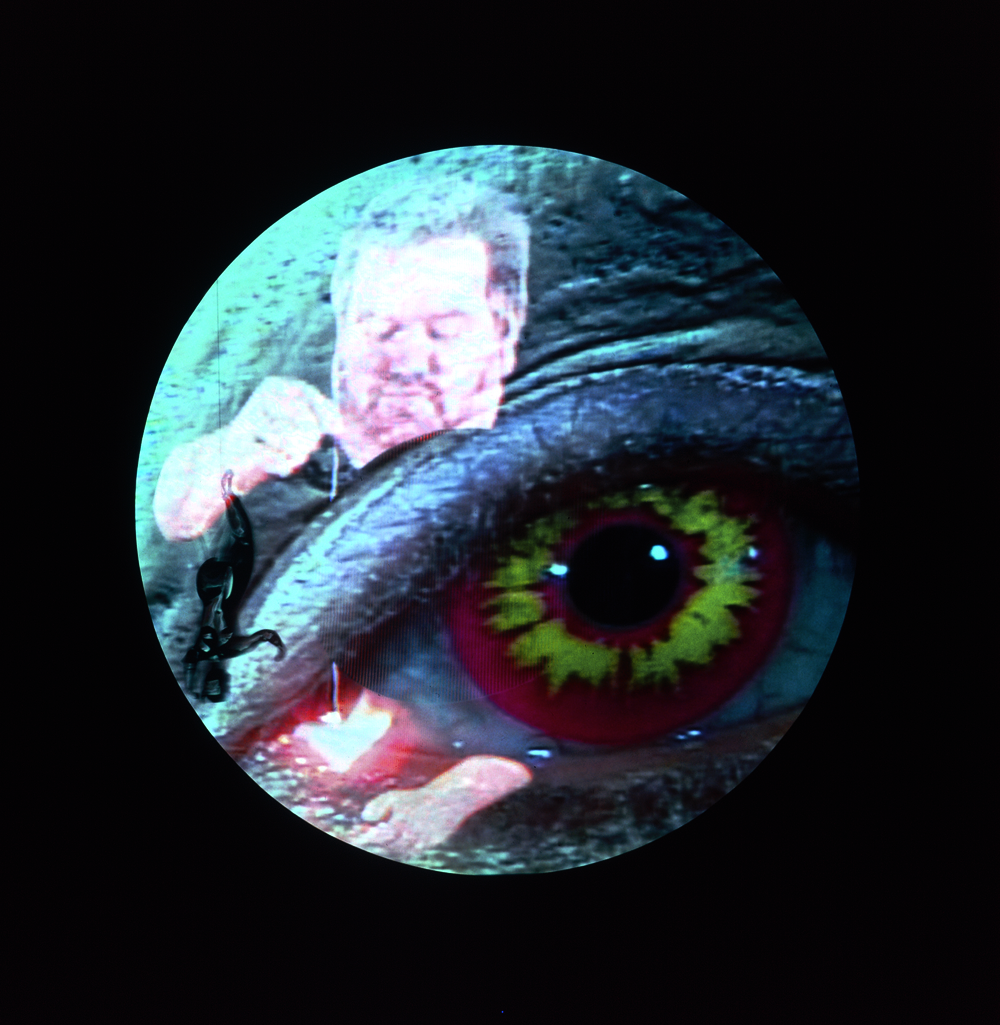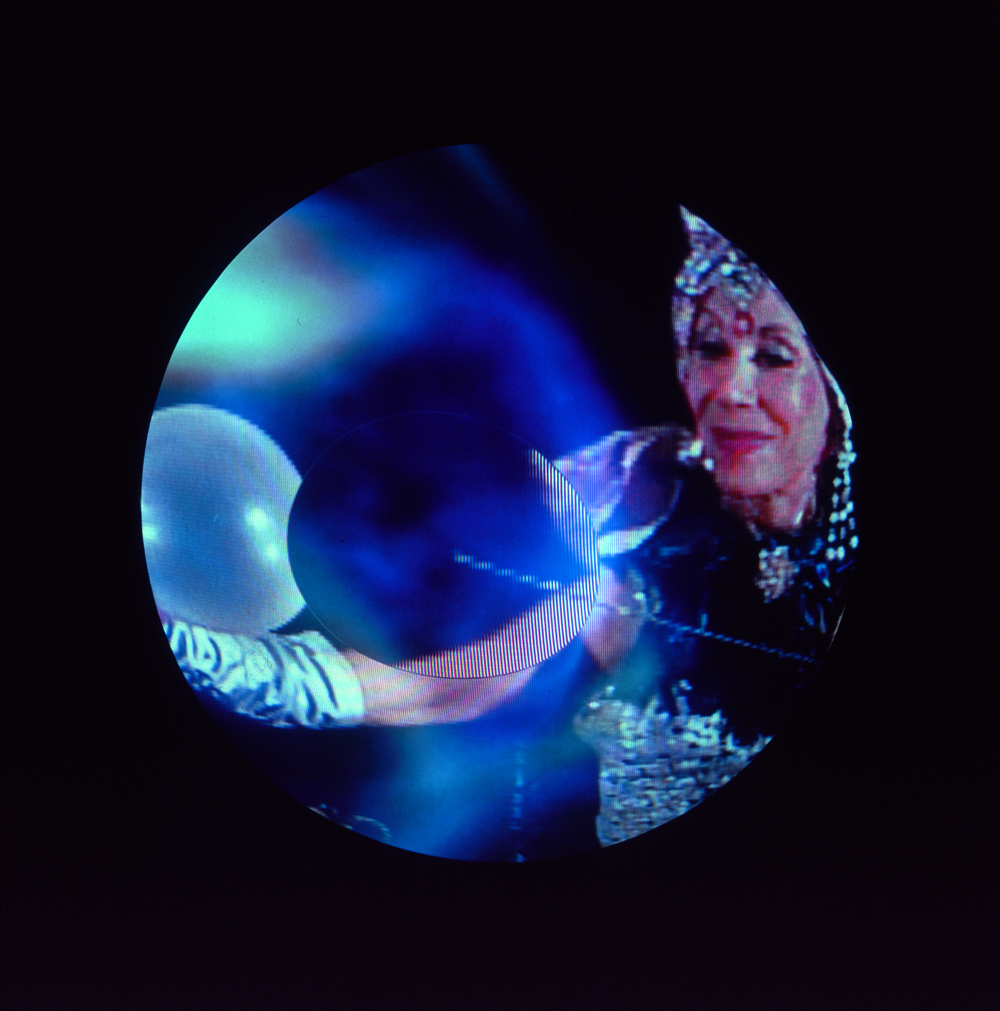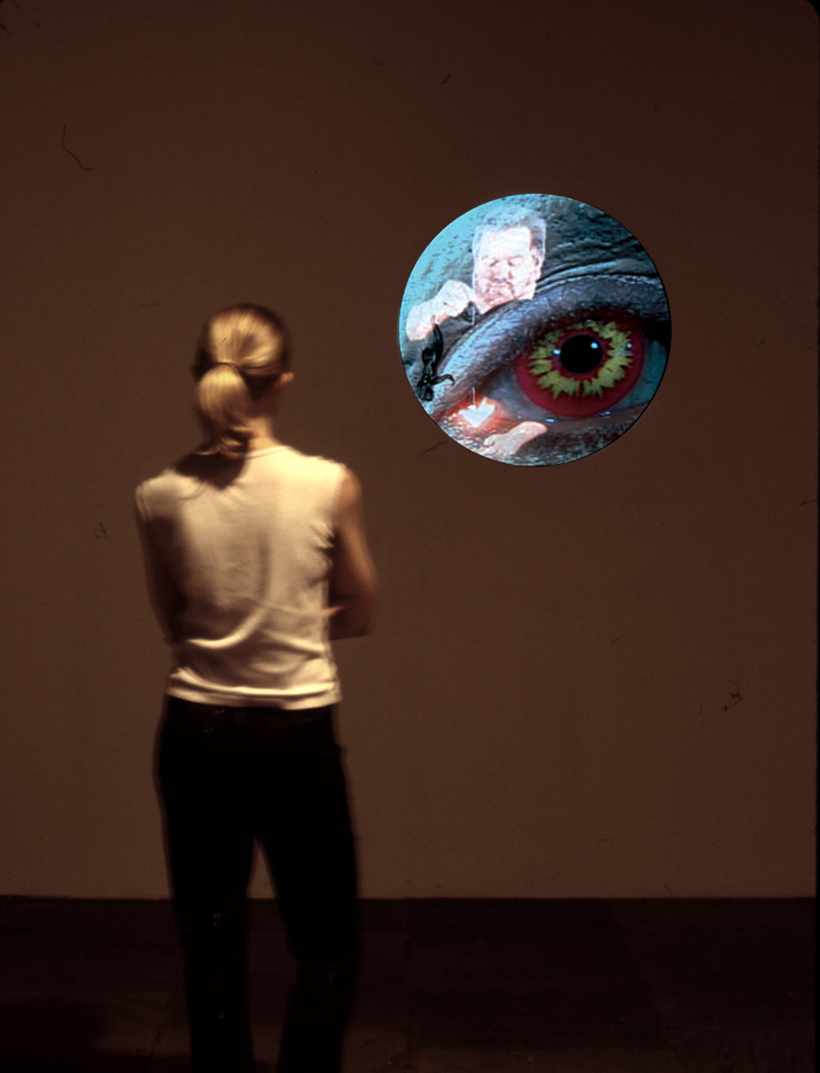Darkest Color Infinitely Amplified
The Whitney Museum of American Art, New York
Mar. 1 - Jun. 16, 2001



In 2000, Oursler had just completed writing the first version of the Optical Timeline, a shadow history presenting a chronology of virtual/mimetic production from the early uses of the camera obscura up to the invention of the internet. As a multimedia artist, Oursler felt there was an important shadow art history yet to be appreciated that was of great significance to contemporary cultural production. Linking disparate activities such as telecommunications, the occult, failed scientific devices and vernacular parlor amusements, this timeline allows the reader to easily recognize patterns of significant trends across time, all involving the construction of a virtual world. For example, as observed by Erik Barnouw*, the moment when ritual space was displaced from religion to the spectacle coincides with the Enlightenment and has parallels with the development of phantasmagoria and early cinematic practices. Likewise, the camera obscura, which functions by focusing light from one space- generally outdoors-into an interior dark space to reproduce an inverted image of nature, highlights the themes and tension surrounding the polarity between light and darkness.
Just before the invention of the movie camera, the practice of the magic lantern phantasmagoria was brought to a high art by Robertson and became very popular. This form of entertainment can be described as a ghost show, involving mechanically-moving magic lantern projections, eerie tones of the glass harmonica, automatons and all manner of smoke and mirrors. The impulse to release tortured interior visions into physical space to be contemplated, inspected and safely consumed by the viewer, as seen here, has long been a staple of virtual-image production/entertainment.
In The Darkest Color Infinitely Amplified, Oursler explores the intersection of the transition from religion to spectacle and the presentation of horror from the Enlightenment to today. Maxwell Anderson, then Director of the Whitney Museum of American Art, commissioned the work for the museum and, as part of the project, introduced Oursler to DMA, a company that was developing and marketing a volumetric projection system. Volumetric projection uses a concave mirror system to project three-dimensional, transparent images into space. Children may be familiar with this technology from magic tricks involving a concave mirror that allows the image of an object to float above it. This system has its origins in pre-Victorian optical devices and was engineered for the 21st century by DMA's optical physicists, whose work facilitated this installation.
The Darkest Color Infinitely Amplified separated the audience from the mechanics of the projection system by a large wall with an aperture of approximately five feet in diameter. A four-foot diameter precision concave mirror was used to reflect/project video images and glass objects from behind the aperture into the gallery space. In the work Oursler combined glass devils, based on Athanasius Kircher's drawings of the magic lantern, and depictions of actors and demonic performers in early magic-lantern displays. These transparent devils refer to Lucifer, the bringer of light, and function as lenses. They reflect virtual images alongside video screens, which are also suspended in midair.
Three performers were involved in the video: "The Astonishing Velma Queen of Illusions", "Steve Rodman Bewitching Magic", and Tracy Leipold. Male and female magicians go through the paces of sleight of hand for the camera and the main protagonist, Tracy Leipold, is meticulously transformed by a special-effects makeup artist into the possessed character from The Exorcist. Actual casts of the makeup used in the film were employed as Leipold slowly transforms into a demon.
The viewer is put into the position of decoding various levels of illusion (the makeup, the simple magic tricks and the apparatus of the installation) and then engaging in a willing suspension of disbelief. For all its artifice, the installation reveals the mechanics of its own production.
* Erik Barnouw, The Magician and the Cinema, Oxford University Press, 1981.